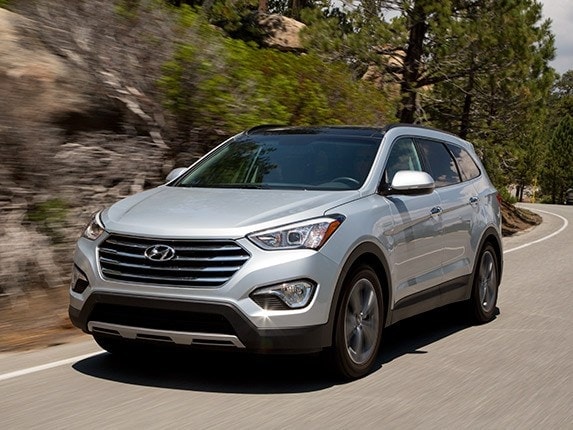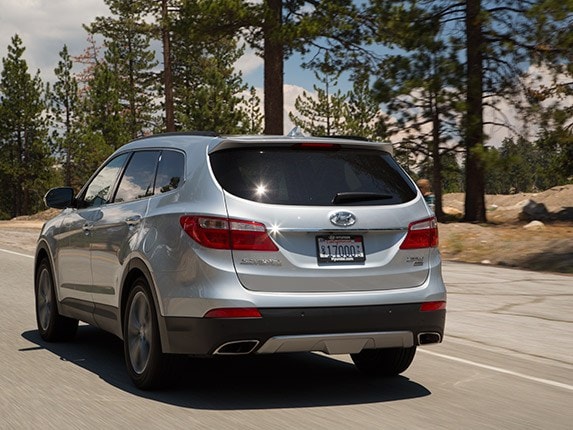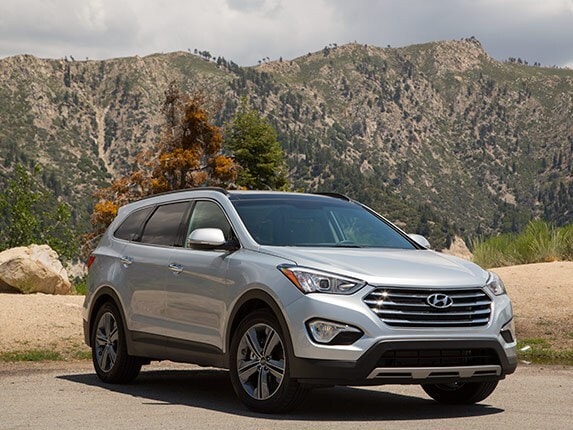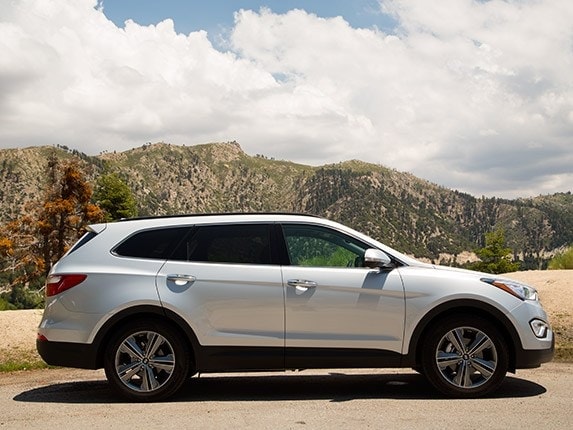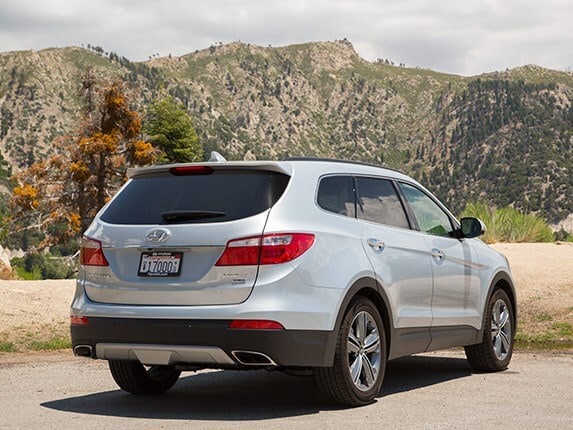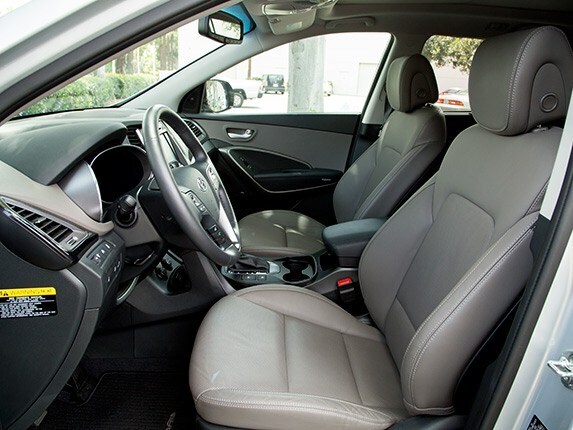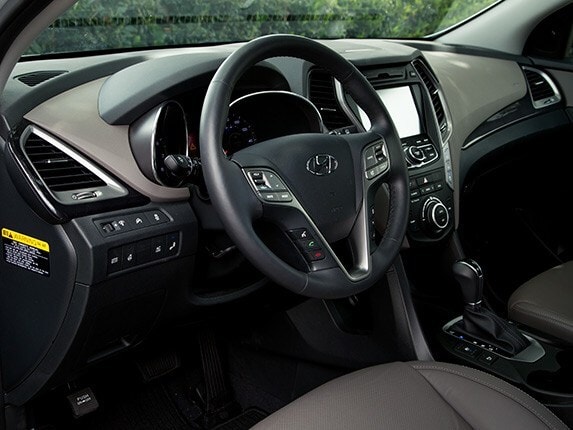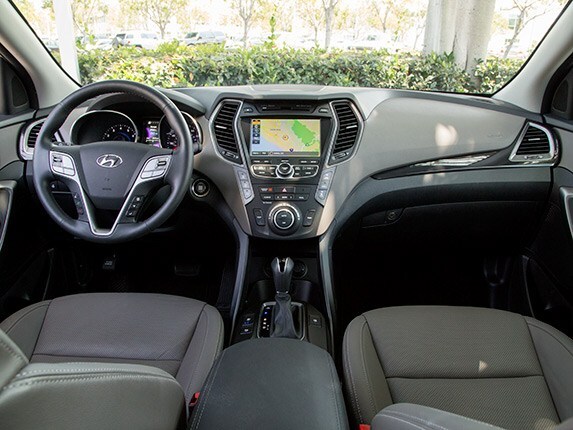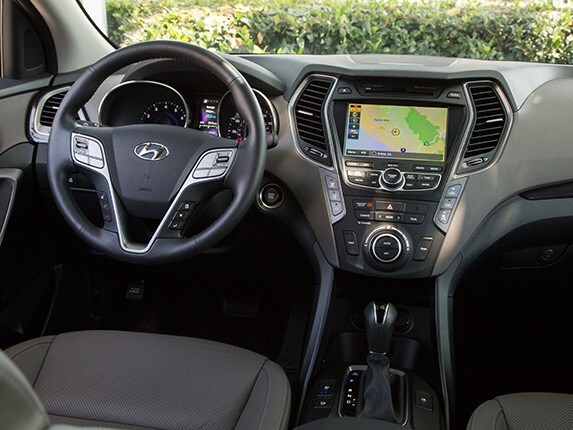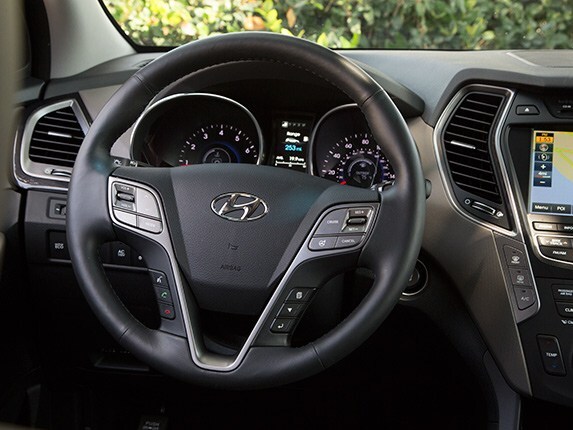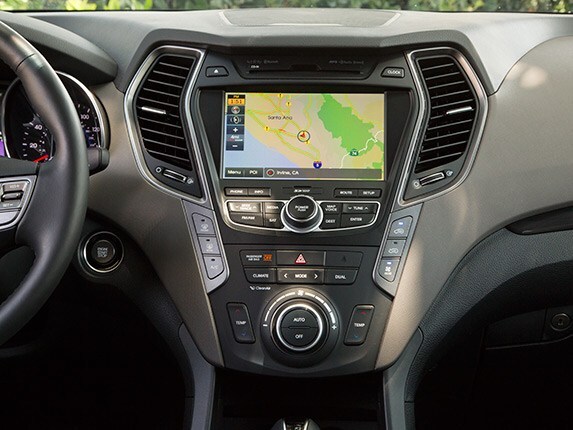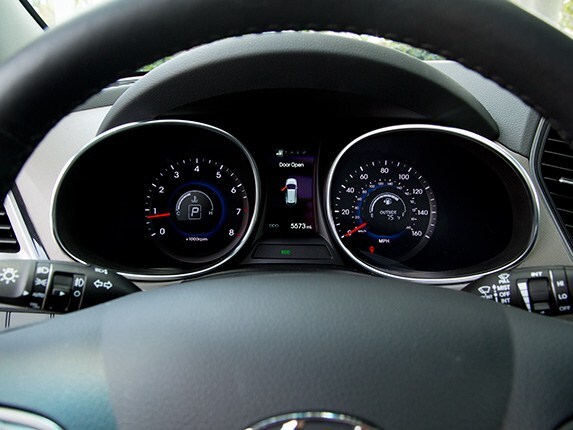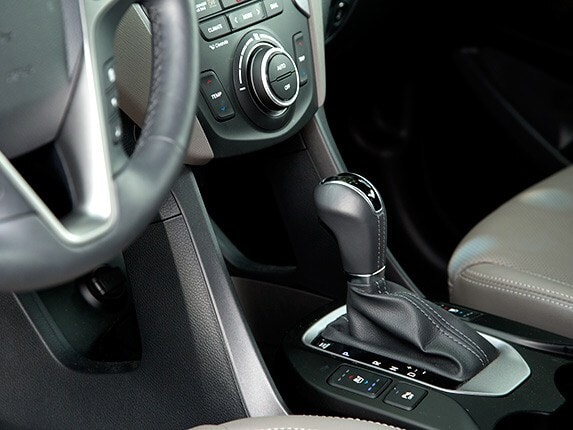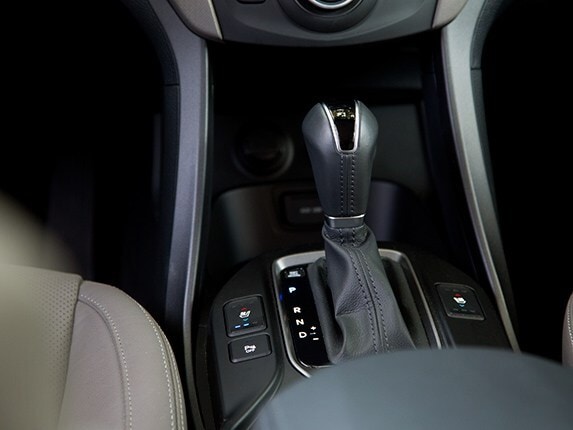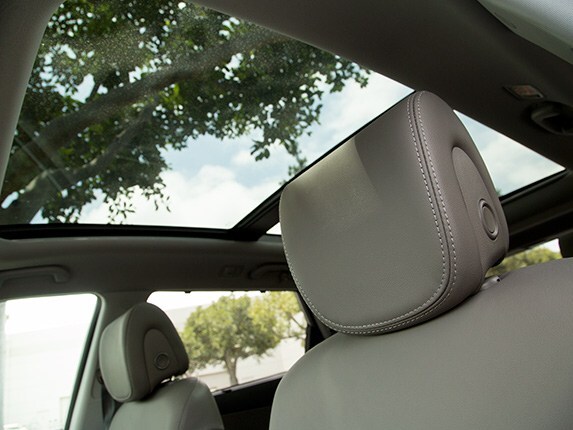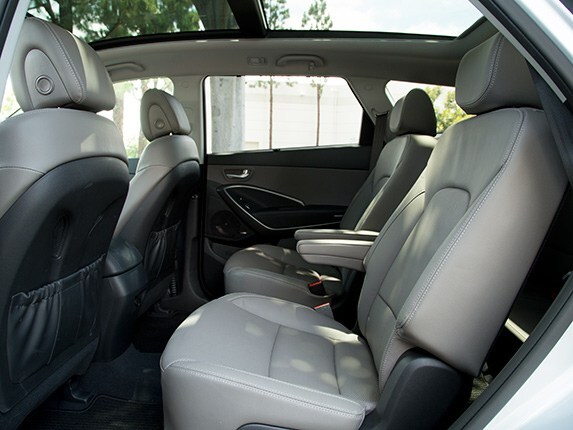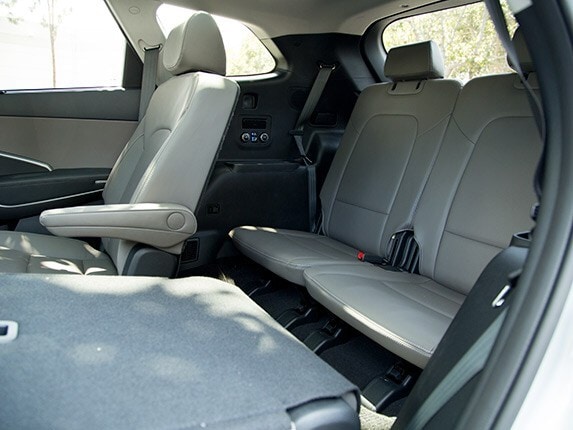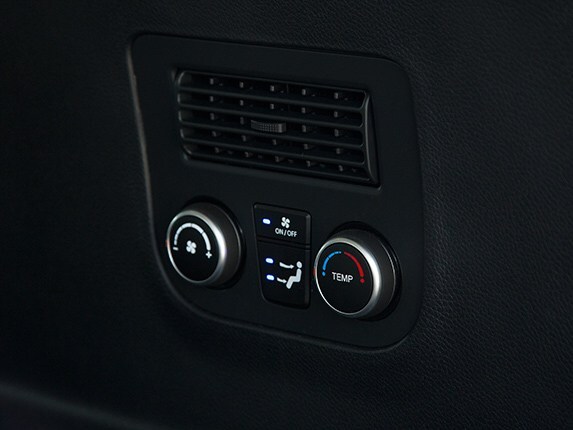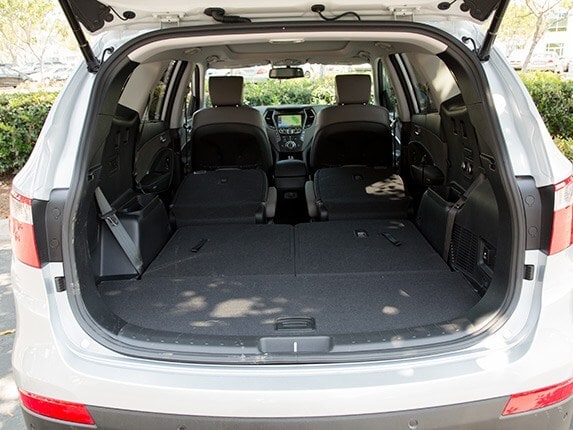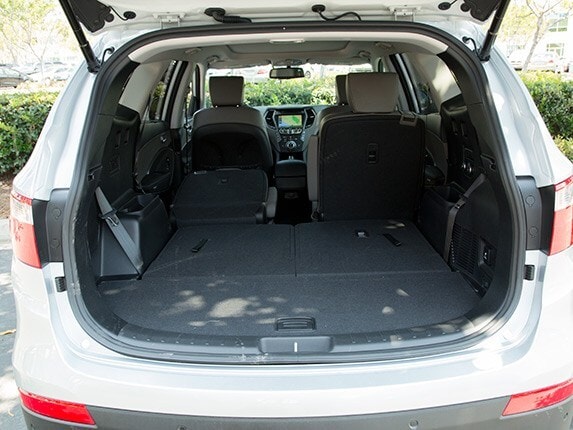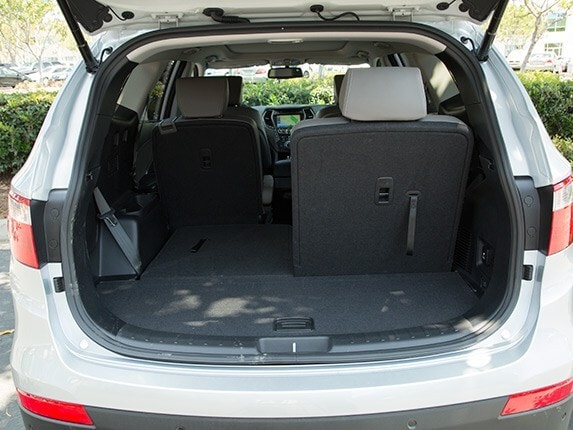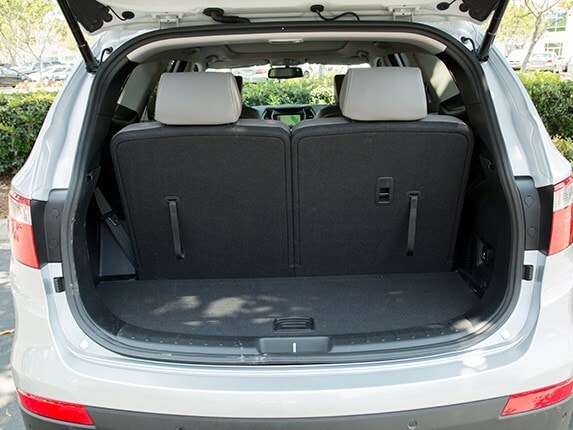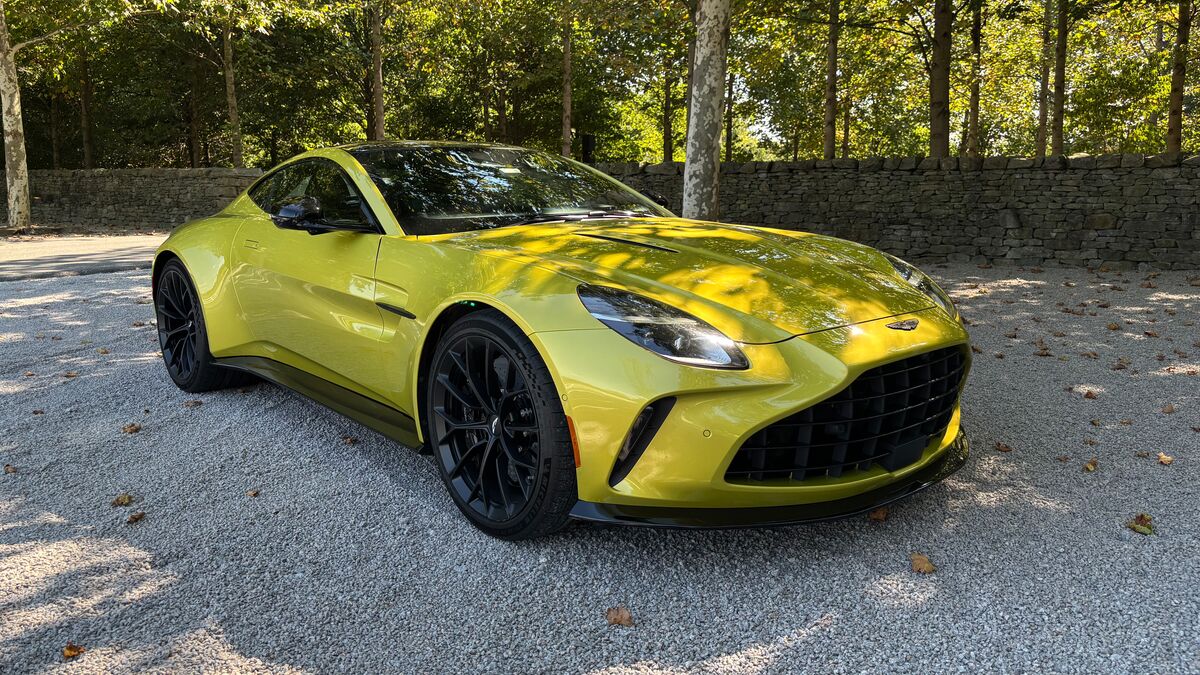As one of the oldest and smallest of the midsize SUVs in our test, the 2015 Hyundai Santa Fe came to this test with a couple disadvantages. On the other hand, it brings one of the lowest prices, has some clever cargo area advantages, and is one of the better looking crossover SUVs on the market. Yet despite this, it became clear during our drive that the steep grade to Big Bear Lake wasn’t the Santa Fe’s only uphill battle.
INTRO , Highlander , Pilot , Sorento , Santa Fe , Pathfinder , NEXT PAGE

Hanging In There
As one of the oldest and smallest of the midsize SUVs in our test, the 2015 Hyundai Santa Fe came to this comparison with a couple disadvantages. On the other hand, it brings one of the lowest prices, has some clever cargo area advantages, and is one of the better looking crossover SUVs on the market. Yet despite this, it became clear during our drive that the steep grade to Big Bear Lake wasn’t the Santa Fe’s only uphill battle.
The 2015 Santa Fe comes in two flavors: 7-passenger GLE and 6-passenger Limited. Our test vehicle was a $39,795 front-wheel drive Limited model with the Ultimate package, meaning it was automatically behind the curve in passenger capacity in this group. Family-centric buyers — and really, who else shops this category? — can get a Santa Fe GLS, which with the Ultimate package comes with most of the features available on the Limited and remains under the $40,000 mark, even with all-wheel drive. Still, things like HID headlights, LED taillights, Infinity sound system, and other features available on the Limited remain off-limits. Furthermore, advanced driver-assist features like adaptive cruise control, collision warning, or lane-keeping assistance aren’t available on the Santa Fe at any price, although it does have blind-spot detection.
2015 Hyundai Santa Fe at a Glance
Driving the Santa Fe isn’t exactly exhilarating, but it’s not a chore, either. Maneuverability around town is fine, the suspension was neither too harsh nor too soft, and the backup camera and blind-spot detection give you a good idea of what’s behind you. However, the transmission hunted quite a bit during the hilly sections of our drive, and the interior got noisy at speed. The gauges were big and clear, and we liked the infotainment system’s clear layout, but some found the driver’s seat uncomfortable, with one going so far as to call it a "deal killer." The Santa Fe’s steering was universally disliked; despite Comfort, Normal and Sport modes, it remained vague and failed to deliver any feedback.
Second-row passengers may have the best seats in the house. There’s plenty of leg and head room even with the panoramic roof, and the chairs offer tilting and sliding adjustments to accommodate taller passengers. The third row is another story. It’s only for two small passengers, and like the Kia Sorento, it’s probably best for Santa Fe customers to think of the third row as occasional-use jump seats. On the plus side, they get their own air conditioning controls, a nice touch that’s shared with the Kia.
Behind the third row is the second-smallest cargo space of all five vehicles gathered here. There’s enough room for a few bags of groceries, but you’ll need to fold at least one seatback for your weekly grocery run. If you do need to max out cargo space, the release levers mounted in the Santa Fe’s make folding down the second-row seatbacks a snap.
Here’s how it stacked up against the rest of the field.
Hyundai Santa Fe vs. Toyota Highlander
Like the Pilot, the Highlander benefits from being a newer vehicle than the Santa Fe. Although absent on our particular test vehicle, the Highlander is available with a higher level of equipment than you can get on the Santa Fe, while still remaining price competitive in this segment. Throw in a superior driving experience, 8-passenger capacity, better cargo space, and roomy second row, and the Highlander simply outclassed the Hyundai at every turn. More Toyota Highlander
Hyundai Santa Fe vs. Honda Pilot
The new Honda Pilot could almost be accused of competing in a different class here. The Pilot’s larger size, (potential) 8-passenger capacity, huge third row and excellent cargo space handily trump what Hyundai offers with the Santa Fe. And lest you think we’re comparing apples and oranges here, a mid-level all-wheel drive Honda Pilot EX-L with the Honda Sensing safety package costs about the same as this Santa Fe. No contest, in our opinion. More Honda Pilot
Hyundai Santa Fe vs. Kia Sorento
While the two Koreans in our test share some basic underpinnings, they couldn’t be more different. The Sorento has a clear advantage in refinement over its crosstown rival/cousin, with nicer materials inside, more modern features including bird’s-eye view camera system and adaptive cruise control, and a notably quieter driving experience. That said, the Sorento was also significantly more expensive than the Santa Fe, a price we’re not sure it fully justified. More Kia Sorento
Hyundai Santa Fe vs. Nissan Pathfinder
In price, drivetrain, and features, the Pathfinder and Santa Fe were evenly matched. However, the Pathfinder brought an added dose of refinement to the table that the Santa Fe couldn’t match, especially when it came to seat comfort. It was also physically bigger, meaning driver and passengers alike had more room to stretch out. Throw in better cargo space, and the Santa Fe felt a step or two behind the Pathfinder. More Nissan Pathfinder
More Midsize SUVs
If the Hyundai Santa Fe‘s style, warranty and features per dollar are calling your name, you can build and price your own or read our full review. If you want to explore even more alternatives than we tested here, visit our Midsize SUV Buyer’s Guide.
INTRO , Highlander , Pilot , Sorento , Santa Fe , Pathfinder , NEXT PAGE
Popular at KBB.com
